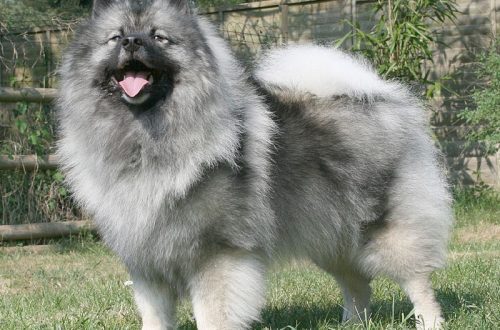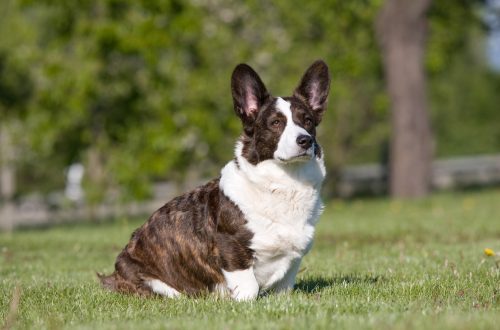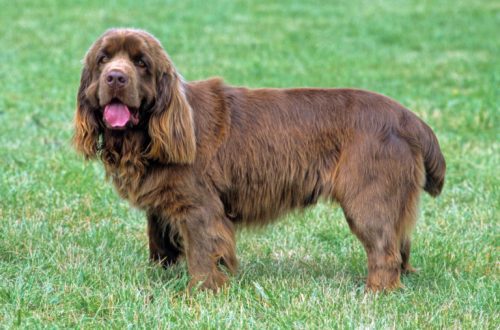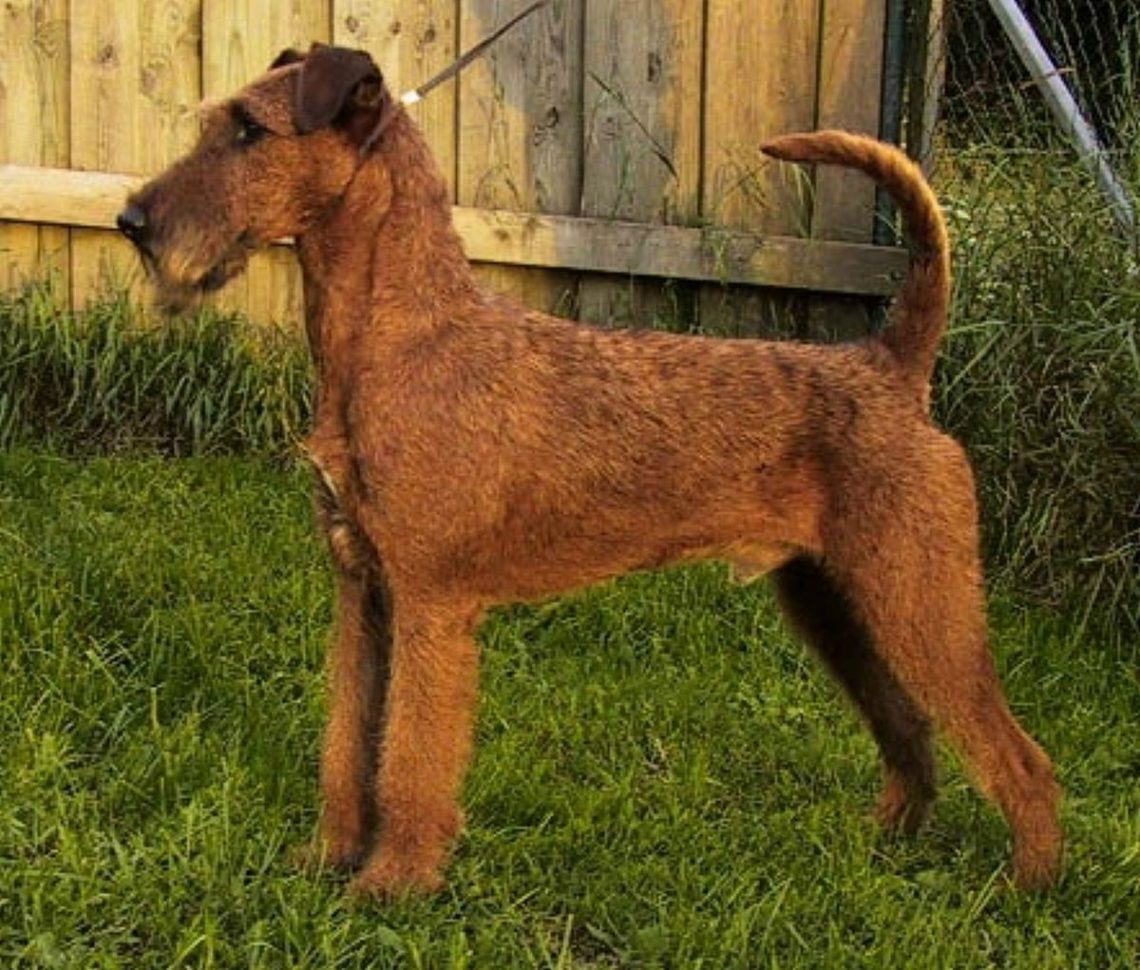
Irish Terrier
Other names: Irishman
The Irish Terrier is the fastest in the terrier group. Distinctive characteristics: harmonious physique, hard coat of all shades of red, modest beard.
Contents
Characteristics of Irish Terrier
| Country of origin | Ireland |
| The size | average |
| Growth | 45-48 cm |
| Weight | males 12.25 kg, females 11.4 kg |
| Age | 13-14 years |
| FCI breed group | terrriers |
Basic moments
- In Ireland, this variety of terriers is called “red devils” and “daredevils”.
- Like all representatives of the terrier group, the “Irish” is quite quick-tempered. Nevertheless, stories about them as ferocious fighters and provocateurs are greatly exaggerated.
- The Irish Terrier is a real “universal soldier”, capable of not only chasing wild boars through the forest, but also guarding the estate, working as a search engine and even setting sports records.
- The breed has never been particularly publicized, so commercial breeding has bypassed it. As a result: all Irish Terriers have excellent health and stable mentality.
- Despite their explosive temperament and excitement, Irish Terriers are smart students who quickly learn even the most difficult material and successfully apply it in practice.
- It is convenient to travel with Irish Terriers: the breed is mobile and easily adapts to any environmental conditions.
- Young Irish Terriers are very energetic, so they need a long walk: at least 2.5-3 hours a day.
- These red-haired “daredevils” have retained all the qualities inherent in terriers, so be mentally prepared for digging trenches on lawns, chasing stray cats and other dog “diversions”.
- The breed needs systematic trimming, since seasonal shedding is not about Irish Terriers.
- For those who get their first dog, “Irish” is the worst possible option, because you can train such a wayward pet only if you have experience with terriers.
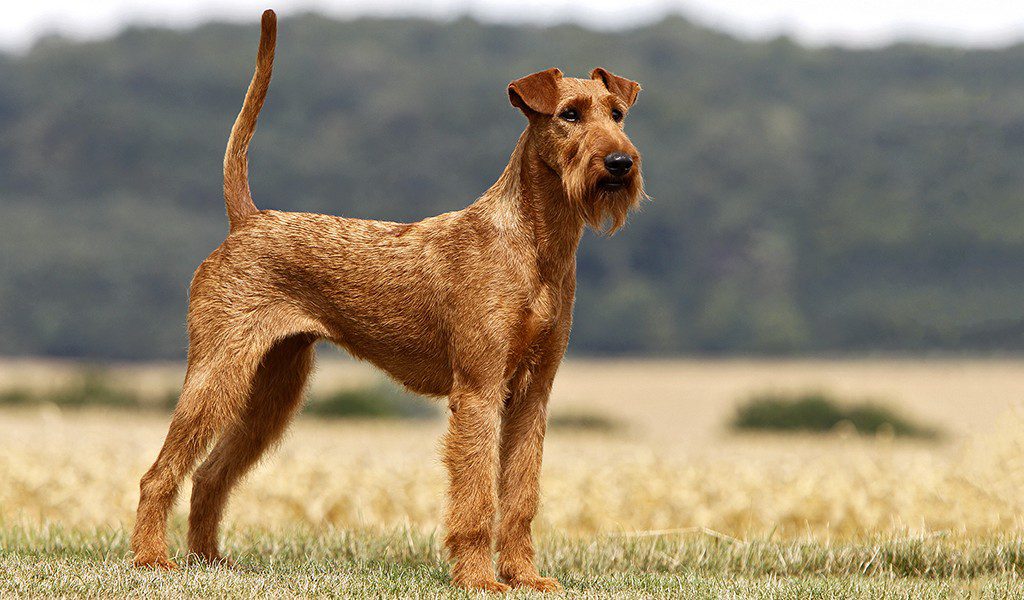
The Irish Terrier is a dog that changes mood and style of behavior like gloves, but is incredibly stable in its own love for the owner. Temperamental, starting from a half-turn, this ginger is a real genius of reincarnation, easily mastering the main dog professions. No matter what important mission he is entrusted with, the “Irishman” will definitely try to overfulfill the plan in order to earn the coveted praise. At the same time, the Irish Terrier is far from being a simpleton, and sometimes a completely unpredictable intriguer, capable of the most unexpected attacks. And yet, curbing and directing the energy of the animal in the right direction is a completely feasible task, especially if you have already dealt with terriers and are aware of their breed “chips”.
History of the Irish Terrier
Ireland gave birth to four varieties of terriers, each of which has a unique exterior and is completely different from their English counterparts. As for the Irish Terrier itself, there are almost no written sources that can shed light on the origins of the breed. Yes, theoretically, the “Irish” remain the most ancient pets that appeared in the “country of shamrocks and leprechauns” almost at the dawn of our era. However, vague excerpts from old manuscripts serve as proof of this statement, which are often too subjective and evaluative to be taken for documentary descriptions.
The breed began to really develop in the second half of the 19th century. So, in 1875, its representatives appeared at an exhibition in Glasgow, and a year later – at a similar event in Brighton, England. In 1879, the animals acquired their own club with headquarters in Dublin, which added points to them in the eyes of breeders. At the same time, it is important to understand that the dogs of those years were inferior to today’s individuals in terms of external indicators. For example, the necks of the first “Irish” were more massive, the muzzle was voluminous, and the body was not so athletic. In addition, at first, not only the tails, but also the ears were docked.
At the end of the 19th century, Irish Terriers received recognition from the English Kennel Club, which made them equal in rights with other breeds. However, the real finest hour was waiting for the natives of the Emerald Isle on the fronts of the First World War, where they were used as messengers. In the turmoil that reigned in the fields, confusing even the most calm dogs, Irish Terriers never lost their composure and were ideally suited for the role of mine-seekers and helpers.
After the war, the popularity of terriers began to decline, and by the beginning of the 30s, it became almost impossible to find the reference “Irish” at exhibitions. The breeding bases of European nurseries, the main suppliers of purebred sires, have also been reduced to the limit. Worried about the impending degradation of the breed, cynologists and amateurs tried to restore philistine interest in it. So, in 1933, businessman Gordon Selfridge even organized an exhibition of Irish terriers in the pavilions of his own department store.
Irish Terriers came to Russia after the Great Patriotic War. In particular, the first representative of this family was brought to the USSR in the late 1940s. It was not easy to get a suitable male for the red “emigrant”, so at first the bitch was mated with Kerry Blue and Welsh Fox Terriers. But already in the 50s, the problem of breeding the breed in Russian realities was solved by a Polish nursery. It was he who transferred to the union a pair of “Irish” males, who were later joined by individuals from the GDR. For several decades, the blood of the domestic livestock was systematically refreshed, but Irish terriers of the “Soviet spill” were still not quoted at international exhibitions. Only after British manufacturers were imported into the country in 1997 did the breed acquire a more refined appearance, gaining admission to European rings.
Video: Irish Terrier
Irish Terrier breed standard
Irish Terriers have the appearance of classic athletes: a dense muscular body, strong, moderately long legs, and a strong back. They, of course, are not fashion pets, but rather born hard workers, in which every muscle is sharpened for a single action – fast running. Another distinguishing feature of the Irish Terrier breed is a unique coat that acts as a tracksuit and chain mail at the same time. It is the hard dog’s body that protects the dog’s body from scratches and minor injuries while hunting, and also has dirt and water-repellent functions. The Irish Terrier belongs to medium-sized breeds, the height at the withers of adult dogs is 45-48 cm, the average weight is 11-13 kg.
Head
The flat, long skull of the Irish Terrier tapers gently towards the muzzle. The stop is slightly pronounced, noticeable only when examining the animal in profile. Cheekbones without obvious relief.
Jaws and teeth
Strong, strong jaws provide a good grip. The Irish Terrier’s teeth are white and healthy. Desirable bite: upper incisors slightly overlapping lower ones.
Nose
The lobe is medium in size and always black.
Eyes
The Irish Terrier has small and very dark eyes. The look of the dog is lively, quick-witted. Extremely unwelcome: clarified or yellowish colors of the iris.
Ears
The dog’s miniature triangular ears point forward and hang down close to the cheekbones. The ear cloth is of moderate thickness, the fold of the cartilage is located above the line of the forehead.
Neck
The neck of the Irish Terrier is distinguished by a good length and a high, proud set. Representatives of this breed do not have a traditional suspension, but on the sides of the neck there are small folds-frills of wool, reaching the lower line of the skull.
Frame
Dogs of this breed have a harmonious body: not short, but not overly stretched. The back is very strong, with a well muscled, level loin. The chest of the “Irish” gives the impression of being strong and deep, but its width and volume are small.
limbs
The legs of Irish Terriers look slender and elegant, but at the same time they are devoid of excessive fragility. The animal’s shoulders are elongated, set at the right angle. The forearms are bony, moderately elongated and straight, the pasterns are inconspicuous, short and even. The hind limbs of the dog are massive and solid. Thighs are strong, fleshy. Knee very moderately angulated, metatarsus carried low. The paws of representatives of this breed are relatively small, but strong. The shape of the paw is rather rounded, with curved toes ending in strong black claws.
Tail
The uncropped tail of the Irish Terrier is strong and of good length. In purebred individuals, the tail is set high, noticeably raised (not higher than the line of the back) and does not form a sharp bend. Despite the ban on docking by European cynological associations, individual adherents of traditions continue to shorten this part of the body to their wards. According to the unspoken law, the tail is stopped by no more than ⅓.
Wool
The hard coat of the Irish Terrier lies flat, does not bulge, but has a characteristic kink. The hair grows thickly, therefore, even spreading it with your hands, it is not always possible to see the dog’s skin. According to the standard, the coat should not be long or pronouncedly curly and hide the outlines of the silhouette of the animal. The hair on the terrier’s head is much shorter than on the rest of the body. There is a small beard on the muzzle.
Color
The traditional colors of the breed are red, reddish-golden, wheat-red. Small markings of white wool on the chest are not considered a serious fault.
Disqualifying defects of the breed
- Bite defects: severe overshot or, conversely, undershot bite.
- Light (depigmented) nose.
- Any coat color other than those approved by the standard.
- Paw pads covered with calluses or with cracked skin.
Irish Terrier personality
As a true native of “the land of leprechauns and red-haired bullies”, the Irish Terrier is quick-tempered, energetic and inexhaustible in all sorts of inventions. Fans of the breed claim that at least three canine personalities coexist in its representatives, each of which is the exact opposite of the rest. In particular, in terms of work, Irish Terriers are unparalleled hard workers, familiar with such concepts as responsibility and diligence firsthand. Guarding the house or searching for psychotropic substances, baiting a badger or cutting circles around the movie theater – the Irish Terrier takes on all of the above with primordial zeal and absolutely the same fuse.
But as soon as the service tasks are over, the dog’s behavior changes dramatically. An attentive worker and hunter immediately gives way to a mischievous clown and actor, whose “numbers” sometimes cause laughter, and sometimes a desire to pour a good prank on the restless prankster. So, for example, Irish terriers are not only unsurpassed runners, but also incredible jumpers, so quietly stealing a cookie or sausage from the table for the breed is not only not a problem, but a primitive trick. All sorts of hecks and hooks for the “Irish” are fun puzzles that need to be sorted out as soon as possible. The end result of such a quest, as a rule, is the same: doors wide open and a pet hiding in an unknown direction.
In their free time from work and entertainment, red-haired rogues prefer to mimic with the environment, so if you did not notice an Irish terrier in the room, this does not mean that it is not there. Most likely, he successfully merged with the interior and imposingly lies down in a corner. The Irish Terrier is a self-sufficient and proud breed, so don’t expect your pet to need your approval before doing anything. On the other hand, these energetic athletes are strongly attached to the person they consider their master. Moreover, they are ready to fully adapt to the lifestyle of the owner, even if it does not always correspond to their natural inclinations. Do you love road trips? Your “Irish” will willingly fall apart in the front seat and enthusiastically stick his muzzle out the side window, catching the wind with his mouth. Looking for a healthier vacation? The red-haired smart guy will not refuse to run for a bicycle.
The Irish Terrier is indulgent towards children, provided that he lived and was brought up with them from puppyhood. No, he is not a trouble-free super-nanny, but quite a good animator who knows how to support a game or a secret sortie outside the apartment. In addition, he is able to endure not the most careful treatment from the side of the baby, for example, tugging at the tail or inadvertently pressed paw. True, the dog will restrain negativity only if it is a one-time “bonus”, and not systematic bullying. But with other four-legged “Irish”, unfortunately, does not add up. Cats for them – goal number 1, subject to immediate destruction; dogs are potential rivals who need to be put in their place as often as possible. So finding a pleasant companion among fellow tribesmen for the Irish Terrier is another task.
Education and training
The learning abilities of Irish Terriers are, if not phenomenal, then very impressive. The only problem is to arouse in the animal the desire to practice. Experienced cynologists advise relying on the natural curiosity of the breed and its interest in new activities. For a company with a beloved owner, a dog will move mountains, especially if the owner is not too lazy to diversify the learning process with gaming moments. On the other hand, it is better not to slide into frank familiarity with representatives of this family. Irish Terriers are aware of what leadership is and strive for it very much. If the “Irish” is the only pet in the house, then in the absence of more suitable competitors nearby, he will willingly compete for spheres of influence with his own owner.
The training program for the Irish Terrier will have to be selected depending on the type of activity carried out by the animal. So, for example, the course for search and rescue dogs is very different from the set of classes that guard dogs attend. As for sports training, with Irish Terriers you can master coursing, agility, dog frisbee and skijoring. On the hunt of today’s “Irish” you will meet infrequently, but this is more due to the unpopularity of the breed as a whole than because of lost stalking skills. If necessary, to train a dog to work on a blood trail, fishing a padded bird out of a reservoir and its subsequent fetching is a completely doable task.
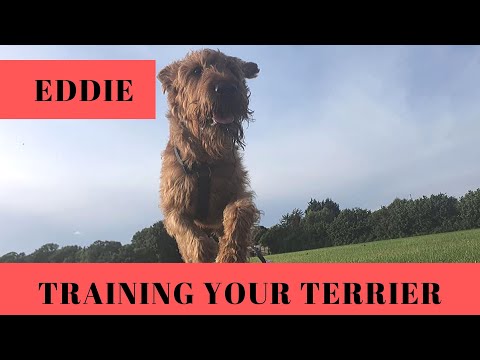

Watch this video on YouTube
It is better not to delay the training and upbringing of the dog, because in the first months of life, Irish Terrier puppies are more pliable, more obedient, and the owner is still an indisputable authority for them. So grow up the ward a little and start learning the basics of OKD. By the way, training in the classic form will not work for the “Irish”. To carry out a command only because it is required by a person, animals consider it below their own dignity. Usually, breeders recommend talking more with pets, explaining to them the appropriateness of a particular requirement. It is also not forbidden to go to training grounds with an Irish Terrier, but one cannot count on outstanding success from training. Red-haired cunning people quickly figure out what’s what, and begin to evade the “obligation” in every possible way. Please note that this breed strives to work fully, and not pretend,
It is believed that Irish Terriers do a good job with ZKS, but it is important to soberly assess the situation here. Due to the rather modest dimensions, a full-fledged security guard will not come out of a dog. However, if your goal is to scare off petty hooligans, why not give it a try. The main thing is that the pet responds quickly and correctly to the call. Do not forget that the Irish Terrier is a gambling dog, often getting into a rage and ignoring any external stimuli. It is optimal if it is possible to delegate the training of an animal to a pro who will develop an individual program for the ZKS. The fact is that the standard standards approved for service breeds will not work for the “Irish” – the complexion is not the same.
You should be extremely careful when punishing your pet. Of course, in the upbringing of any animal, one method of gingerbread is indispensable, but in the case of Irish terriers, sometimes it is better to turn a blind eye to a harmful trick than to cause negative emotions in a dog. Moreover, the breed has an excellent memory, and the “Irishman” fixes all the injustices in the mind for a long time. Accordingly, no matter how carefully and efficiently you work with a dog, it will not work to train an exemplary campaigner out of it, automatically executing any command. After all, Irish Terriers were not bred for this. It is better to give the ward more freedom, and he will definitely answer you with respect and diligence.

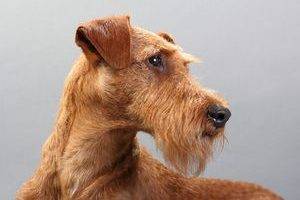
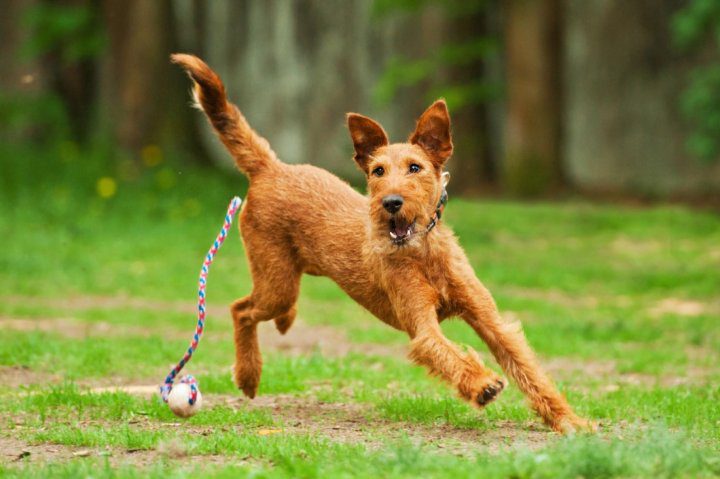

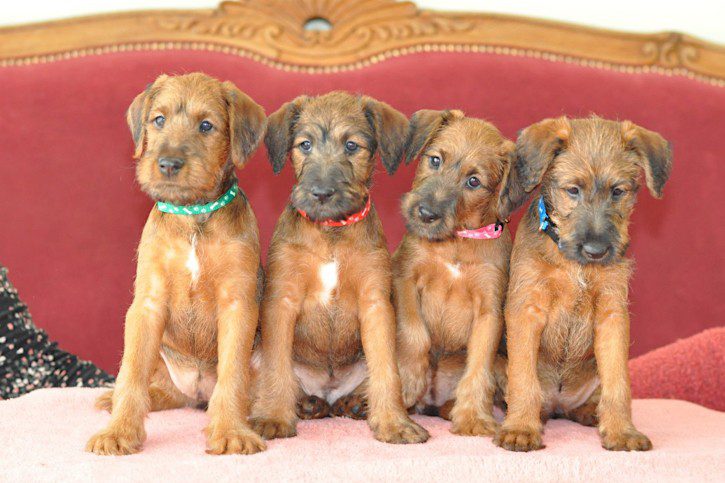

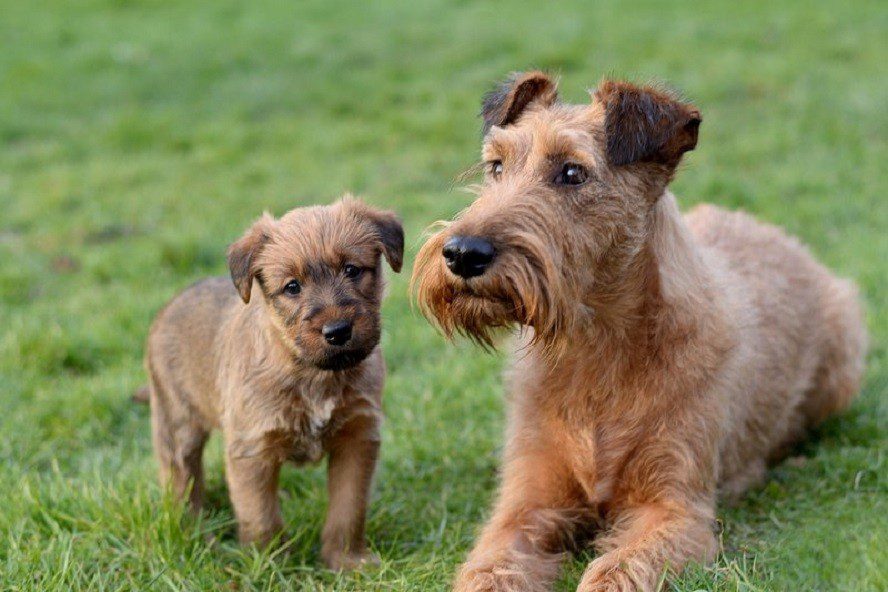

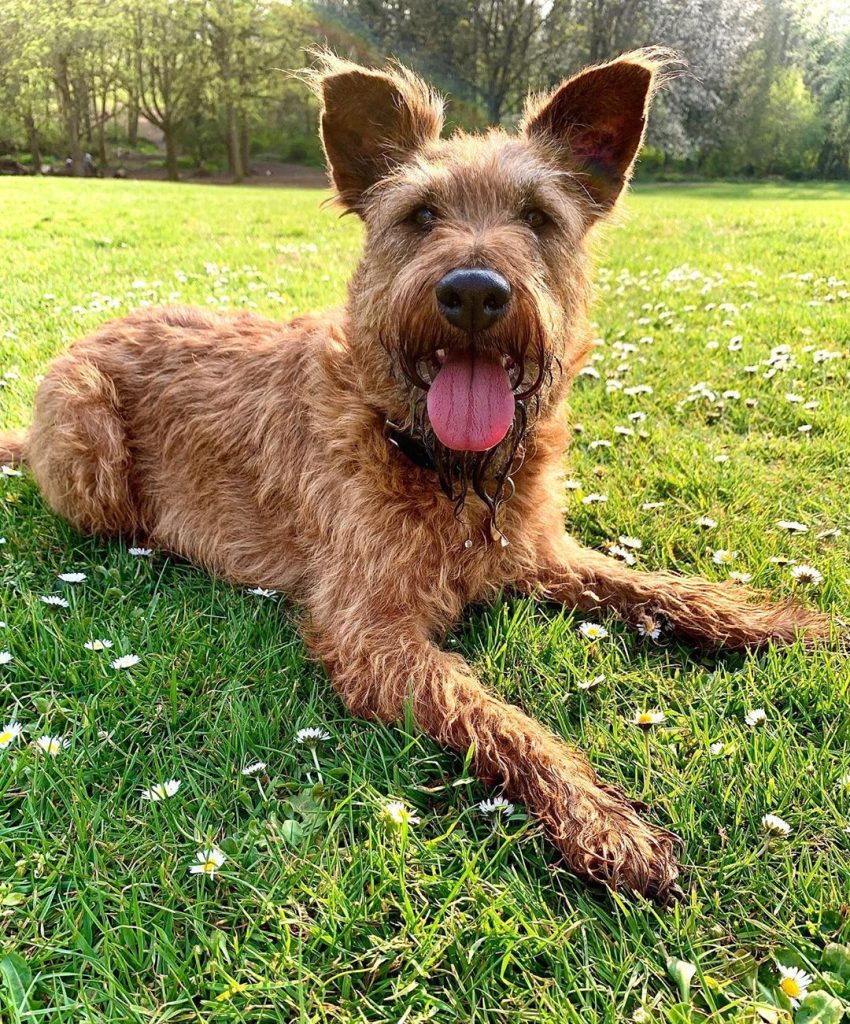

Maintenance and care
Irish Terriers are not acquired in order to be put on a chain and settled in a booth. Of course, the breed did not become completely decorative, but its working status has long been transformed into a sports companion. If we are talking about ideal dog housing, then for the “Irish” these are country cottages with a spacious fenced area. Moreover, it is better to put the fence higher – in a jump, terriers can overcome the bar of 1.5 meters. The dog gets used to a standard apartment, if the owner does not limit the pet in walking and is not too lazy to fully train with him in the park.
Irish Terrier Hygiene
So that the Irish Terrier does not look neglected and disheveled and does not lose its breed features, it is supposed to be trimmed. Aerobatics is, of course, a manual pinch. However, for beginners, such a technique is beyond reality, since even an experienced “plucker” can take 5 or more hours to process one dog. Therefore, if you have already decided to save on professional grooming, then at least stock up on a set of trimming knives, with which the procedure will be faster and easier. It is clear that in the absence of practice, the result of the first trimming is unlikely to be impressive, but the breed in the Irish Terrier should be guessed. In particular, trimming schemes that clearly demonstrate the options for pinching on specific areas of the body will be a good help to a self-taught groomer.
Tools needed for plucking an Irish Terrier:
- stripping;
- slicker brush;
- trimming knife;
- thinning scissors;
- wool clipper.
The first trimming is carried out at 2.5-3 months: the procedure helps to rid the puppy dog of unnecessary plumpness and softness. The mustache and beard are usually not touched, as are the legs, but to give these areas a neat look, the hair on them is slightly trimmed with scissors. The hairs in the ear canal are also plucked to allow air to circulate inside. As for the frequency of the procedure, show Irish terriers are pinched every 1.5-2 months, and on the eve of the event they simply bring what they have begun to perfection. Pets can be trimmed every six months, in the intervals between pinching limited to standard combing the dog with a brush.
Important: pinching is carried out only on clean, pre-combed and sorted hair from tangles.
The Irish Terrier does not need regular baths in principle, especially since in the summer representatives of this breed willingly splash in open water. If the dog is seriously dirty, a bath day will have to be arranged. Just use the right shampoo for rough-haired breeds and do not let your pet outside until it is completely dry.
The dog’s eyes and ears are cared for according to the classic scenario: systematic cleaning with a soft cloth moistened with herbal tea or cleaning lotion. You will have to tinker with the puppy’s ears additionally: in order to form the correct setting, the ear cloth is fixed with a plaster (glue) on a cardboard or plastic frame.
Your Irish Terrier’s teeth need to be sparkling white, so go over them once a week with a toothbrush or silicone brush head, and give your dog chews on hard treats. The claws of the “Irish” are cut only when necessary. For example, if a dog runs around the street a lot and actively trains, it will be necessary to cut the keratinized layer about once every one and a half months, or even less often.
Feeding
The diet of the Irish Terrier is traditional: meat and offal seasoned with cereals, stewed or fresh vegetables, fruits and herbs.
Fermented milk products and boneless sea fish serve as additional sources of protein for dogs. Along with food, it is useful for the “Irish” to give vitamin supplements. Particular preference is given to calcium-containing supplements and complexes with chondroitin and glucosamine during the period when the puppy is growing rapidly. Dry industrial feeds will also be a good option if these are varieties for medium breeds of at least premium class.
Irish Terrier Health and Disease
The Irish Terrier is a relatively healthy breed, and the “tail” of incurable genetic diseases does not follow it. However, dogs can suffer from hip dysplasia, hypothyroidism, and von Willebrand-Dian disease. An unpleasant pain due to heredity is hyperkeratosis of the paw pads. For some time, the breed ailment did not manifest itself, which gave breeders hope for its complete disappearance. However, in recent years, individuals with pads, “decorated” with calloused and spiny growths, have been increasingly born. By the way, the disease is inherited in an autosomal recessive manner, which requires the presence of the hyperkeratosis gene in both parents.
How to choose a Irish Terrier puppy
The main problem when choosing an Irish Terrier puppy is the shortage of registered kennels, so sometimes you have to almost queue for the kids.
- Irish Terrier puppies are distributed at 2-2.5 months, but it is better to get to know them early, for example, at 4 weeks of age.
- Assess the reaction of the bitch to your arrival. If the dog tries to gather the cubs in a pile and cover with his body, this is normal. Explicit cowardice, aggression towards a stranger is an alarm signal.
- The show potential of Irish Terrier puppies reveals itself around the fifth month of life, so if you plan to get a show-class animal, delay the purchase longer.
- When a stranger appears, puppies should not run away as fast as they can. This suggests that the animals are raised in isolation and have no contact with anyone other than the owner of the nursery.
- The correct Irish Terrier puppy is sociable and responsive to affection. He willingly goes to his hands, substitutes his belly for scratching, allows himself to be felt.
Irish Terrier price
A club Irish Terrier puppy with a package of documents and vaccinations, by definition, cannot be cheap. If you come across ads with a symbolic price tag of 150 – 250$ for the breed, it is better to pass by. Usually healthy babies from high-class manufacturers cost 500 – 650$, and this is far from the limit. The price of pet-category puppies can be significantly lower than the average market value, but it almost never drops below 350$.





